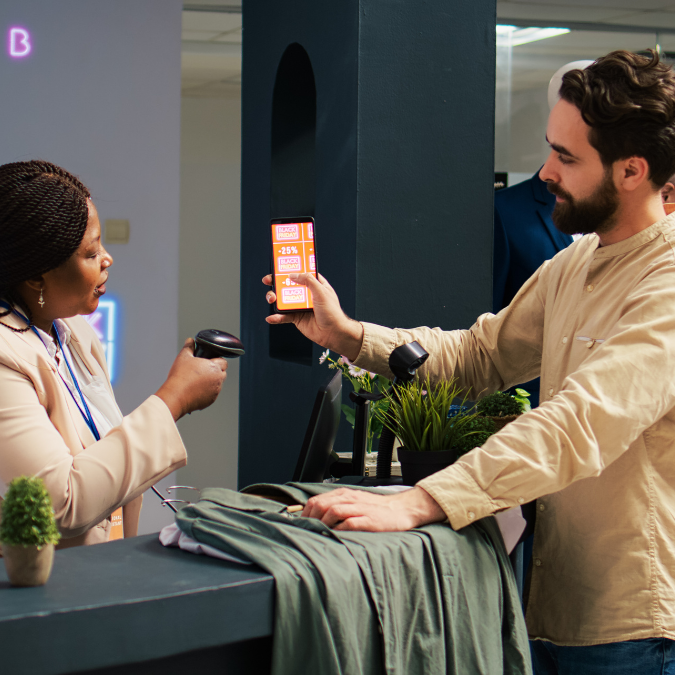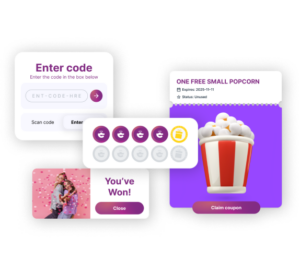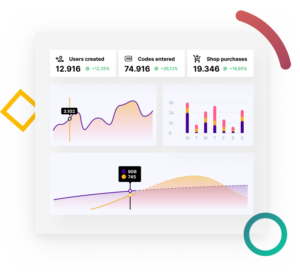
Customer loyalty has always been the cornerstone of successful retail. But how we cultivate that loyalty has undergone a fascinating transformation over the centuries. This blog post takes a journey through the evolution of retail loyalty programs, exploring its humble beginnings to its current, data-driven form.
The birth of loyalty programs: copper tokens
The concept of rewarding loyal customers isn’t new. During the 18th century, retailers used copper tokens as a way to incentivize repeat business. These tokens, essentially early versions of coupons, could be redeemed for discounts or merchandise. Trading stamps, distributed by companies such as Sperry & Hutchinson, became popular during the 19th century. These stamps, which are gathered in booklets with each purchase, can be exchanged for a diverse range of products. These early programs laid the foundation for the more sophisticated retail loyalty programs we see today.

Points and rewards: the foundation of modern loyalty programs
The 20th century marked the beginning of points-based retail loyalty programs. American Airlines was the first airline to introduce frequent flyer programs, which gave travelers miles that could be exchanged for free flights. This idea rapidly caught on in the retail sector, with stores providing points for each dollar spent. These points can be collected and traded for discounts, complimentary items, or unique experiences.
Modern retail loyalty programs have taken things a step further by introducing tiered structures. These programs classify customers according to their spending behaviors and provide them with various benefits depending on their tier. High-value customers might enjoy benefits like exclusive discounts, early access to sales, or personalized offers.
The rise of digital technologies has continued to revolutionize customer loyalty. Today, retailers have the ability to use data analytics to personalize rewards and offers for individual customers. By understanding their preferences and purchase history, retailers can create a more engaging customer experience and encourage repeat business. Read more about collecting customer data and how it works.

Omnichannel integration: a seamless loyalty experience
The modern customer expects a seamless shopping experience across all channels such as online, mobile, and in-store. Retail loyalty programs have adapted to this reality by offering omnichannel integration. This means that customers can earn and redeem rewards regardless of how they choose to shop. For example, a customer who browses online but purchases in-store can still have their loyalty points applied. This convenience helps build a deeper bond with the brand and promotes ongoing loyalty.
The role of loyalty programs in customer engagement
In the current retail landscape, retail loyalty programs have become the backbone of customer engagement and experience strategies. They play an essential role in promoting long-term commitment and customer retention. By offering tailored rewards, tiered benefits, and seamless integration across multiple channels, retailers can create a compelling value proposition that keeps customers coming back.
Furthermore, retail loyalty programs provide important information about customer behavior and preferences. Retailers can use this data to improve their marketing strategies, optimize inventory management, and enhance overall customer satisfaction. In essence, retail loyalty programs do not just focus on rewards; but they are also about building lasting relationships with customers.
Explore loyalty program examples to spark your inspiration.
The future of retail loyalty
As technology continues to advance, the future of retail loyalty looks promising. Innovations such as artificial intelligence and machine learning will further enhance personalization capabilities, making it easier for retailers to understand customer needs and preferences with greater accuracy. Additionally, blockchain technology has the ability to transform loyalty programs by offering secure, transparent, and decentralized methods for monitoring and redeeming rewards.
In conclusion, the evolution of loyalty in retail reflects the industry’s ongoing commitment to customer engagement and retention. From the early days of copper tokens to today’s high-tech digital programs, retail loyalty strategies have continuously adapted to meet changing consumer expectations. By embracing points and rewards, tiered benefits, personalization, and omnichannel integration, retailers can build strong loyalty programs that drive long-term success. As we look to the future, the continued evolution of retail loyalty programs will undoubtedly play a pivotal role in shaping the retail landscape.




